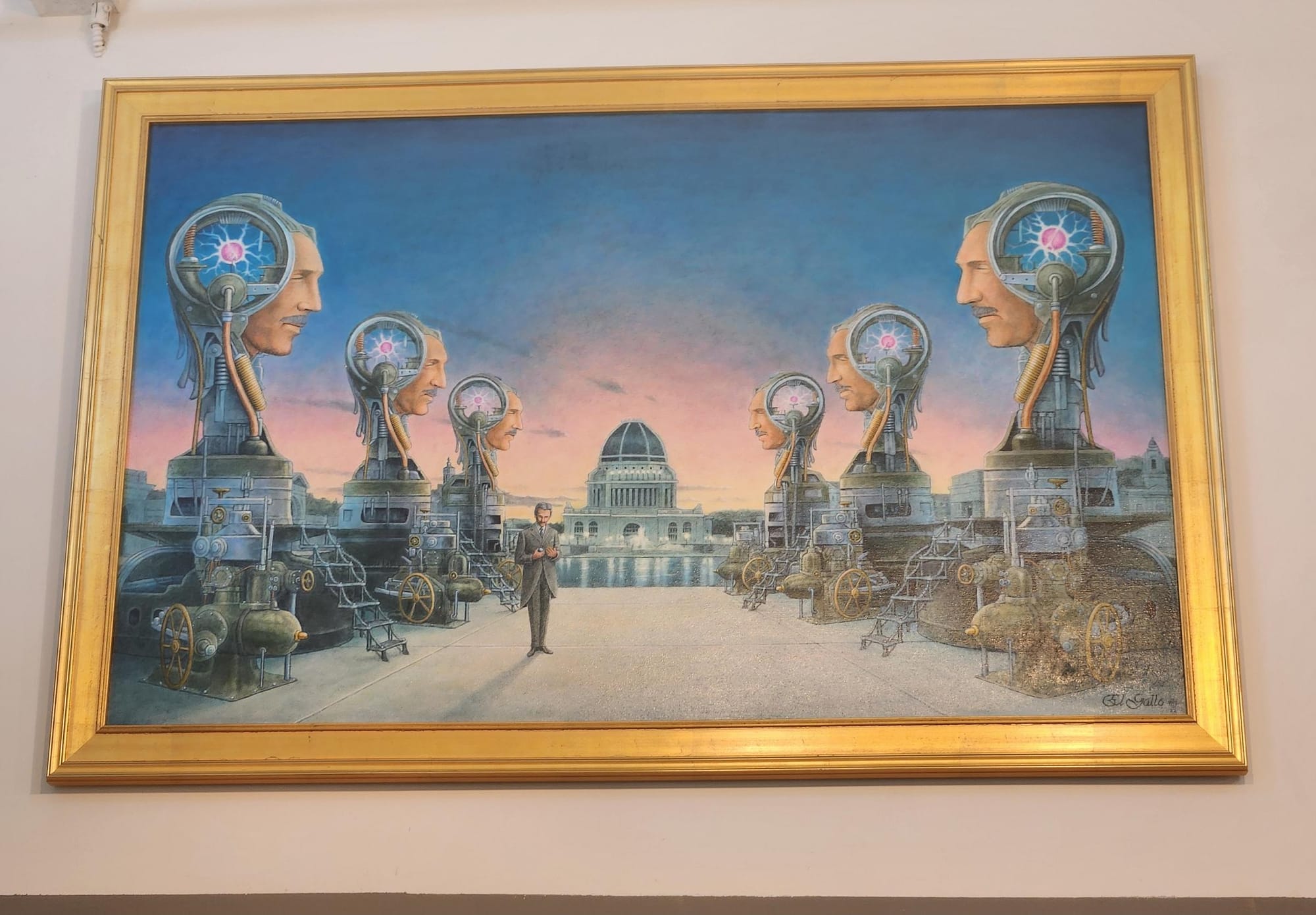The Grand Gallery
560 2nd St
Oakland
El Gallo, or Bill Weber, as the government or his friends and family would know him, sat quietly, tucked in a corner and wrapped around his wooden chair, paintbrush poised in front of a small easel. In a nook by the register of recently opened The Grand Gallery in Oakland’s Jack London district, he studied his canvas, debating the next stroke.
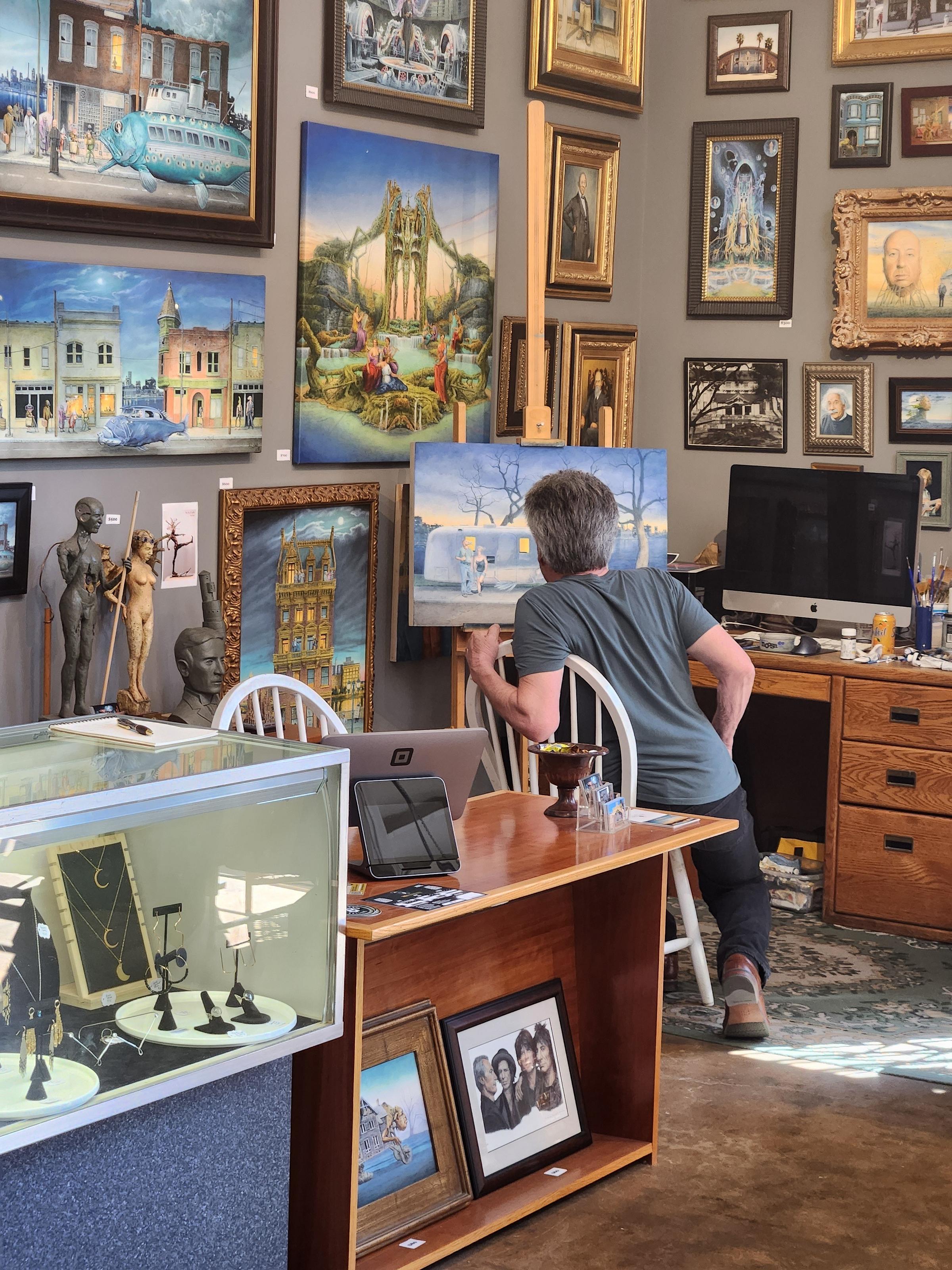
The gallery occupies what used to be Narrative, a beautifully curated vintage home goods and art shop I wrote about here last week. While a smaller space than the massive footprint next door, that is not to say it is small, nor is it lacking in wall space, with several moveable walls employed to great effect. The room, divided into several smaller, more bite-sized sections, became easier to navigate, to let your eyes wander, roam, and settle, rather than glaze over at the hundreds of perspectives staring back at you.
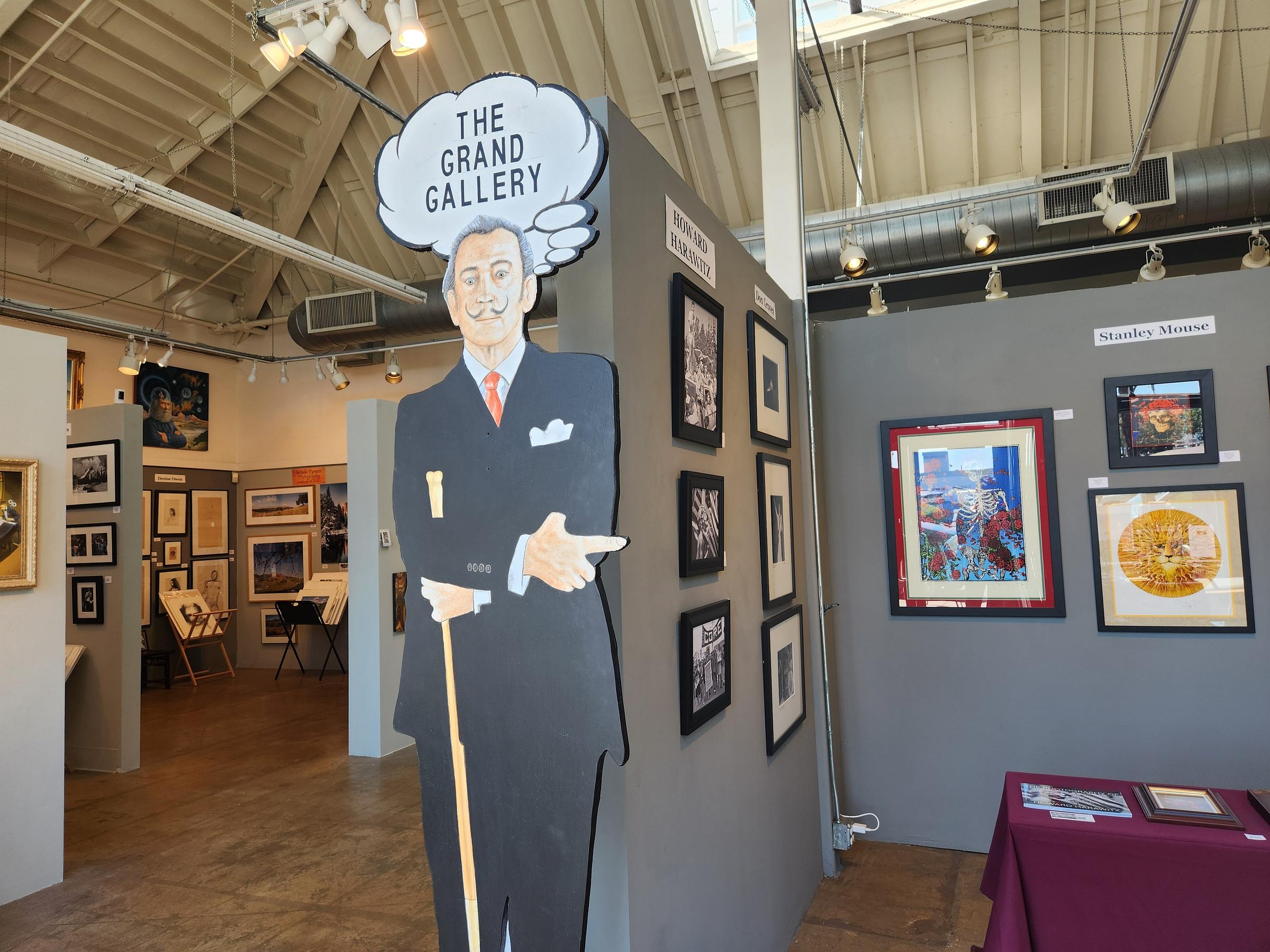
A slightly goofy but fun Dali directs viewers inside. At the front, tables of affordable prints, cards, and jewelry are on offer, and at the rear of the building a room of rooms; Studio 11, individual art studios for a variety of makers, quietly harbor more pieces than the front display.
And on this day, one live artist, friendly and welcoming.
Karen Kramer’s botanically-driven watercolors had stopped me upon first entering the space. Her personal demeanor and warmly colored studio flowed with the same rolling, gentle energy as her paintings.
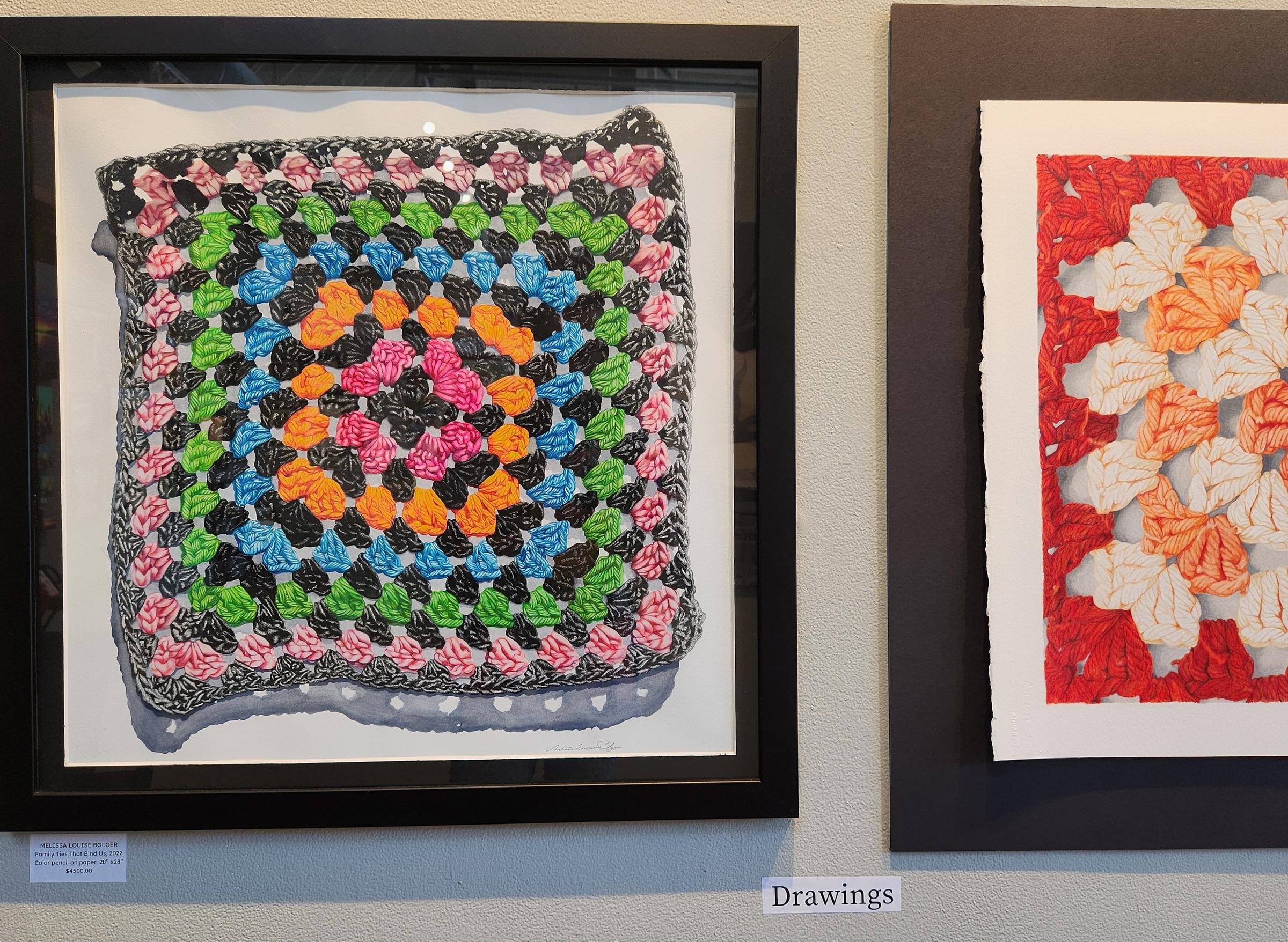
I marveled at the skill and finesse of several artists, such as Melissa Louise Bolger and Ron Norman, both of whose large, photorealist pencil drawings were arresting, albeit for rather different reasons. Bolger’s “Family Ties That Bind Us” and “A Piece of Her In Orange,” both of which are 28”x28” crochet granny squares expertly rendered in colored pencil, ooze sweetness and affection, love and familial reflection.
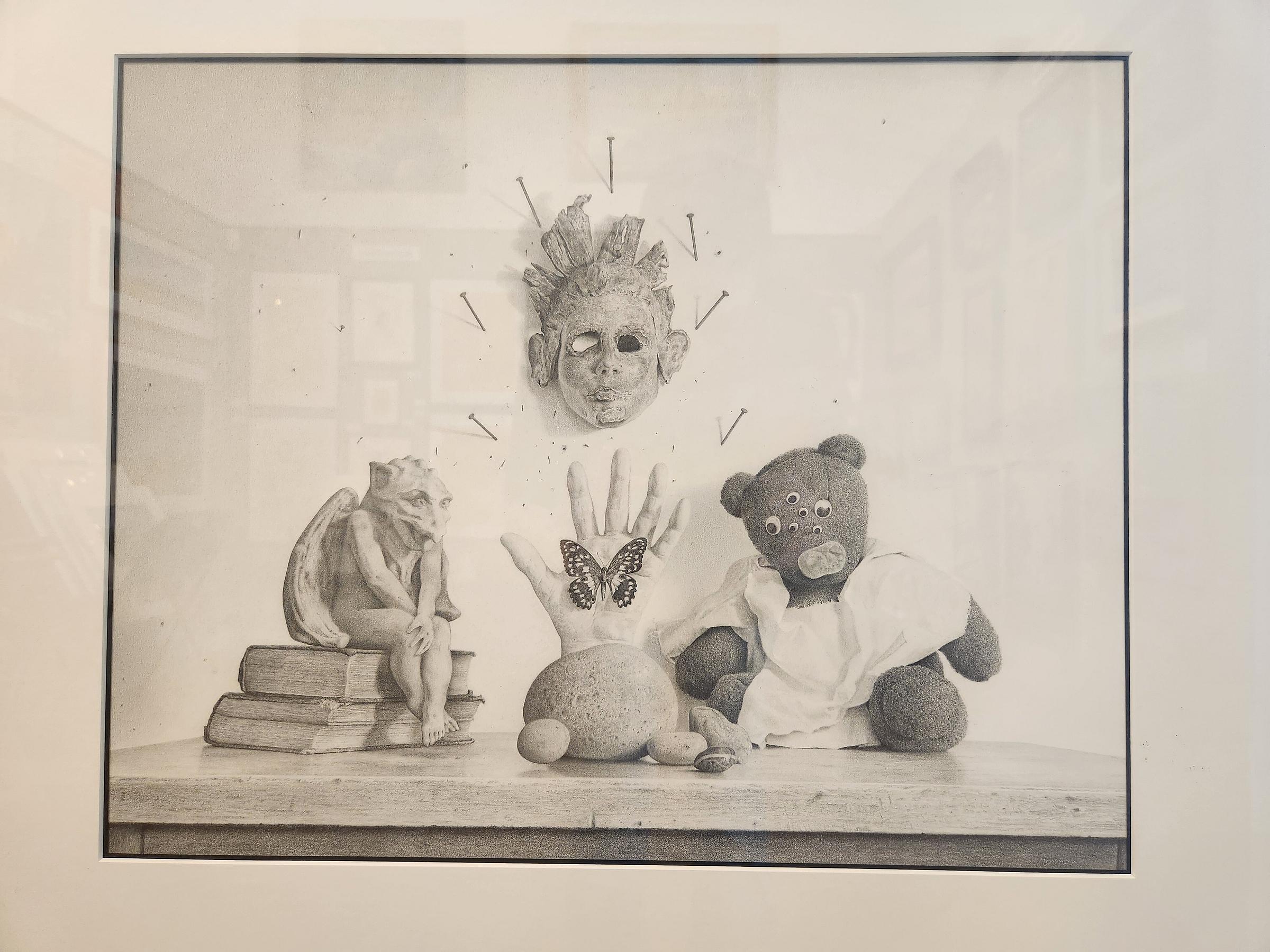
Norman’s “Teddy & Kax at the Shrine of St. Jason The Dubious” does not. On a desk, a still life: a disembodied hand with a butterfly in its palm, wrist obscured by rounded stones, reaches out and up toward the spiky haired, one-black-eyed Michael Myers-style Halloween mask nailed to the wall, surrounded by a halo of nails. In greyscale, familiar and yes, familial too, it is haunting and wrong, but only just so. On the viewer’s right sits Teddy, his six googly eyes making up for the mask’s missing one(s), his mouth a bandaid, garment a rumpled cloth, and slouch resigned. Still fuzzy and comforting, if also projecting an aura of sadness. To the left, Lord Kax, a gargoyle-coded creature with tucked winged, beaked and gnarled face, sloped toes, and a two-book perch. He appears to pant in excitement, for what we do not know.

Weber’s works are scattered across the walls, both constructed and original, and for good reason. His oil paintings, ranging from quite small to several feet across, are slightly unsettled but dreamy, a world reimagined through the lens of a true, weird, Bay Area artist. With the dreamy haze of Dali and Miyazaki, he weaves snapshots of alternate, or perhaps future, worlds. Transitional light and strong, cotton candy skies, a blue cast on many scenes, dampened, dank. Fitting for a fish (bus).

The gentle, broken being in “Poverty,” displayed as the 2008 pencil sketch below a 2010 oil version, limps forward on hobbled, bandaged legs, large eyes drooped and weary, bottom lip protruding. His painted jowls are smoother, softer, his weepy and furrowed face traded for a more contemplative gaze, exhausted but more at peace with his lot. His hunched, humped back crests just higher than the house it houses, but equally uneven, their slopes mirrored. His wheels are weathered, his shingled falling, his residents…resigned.
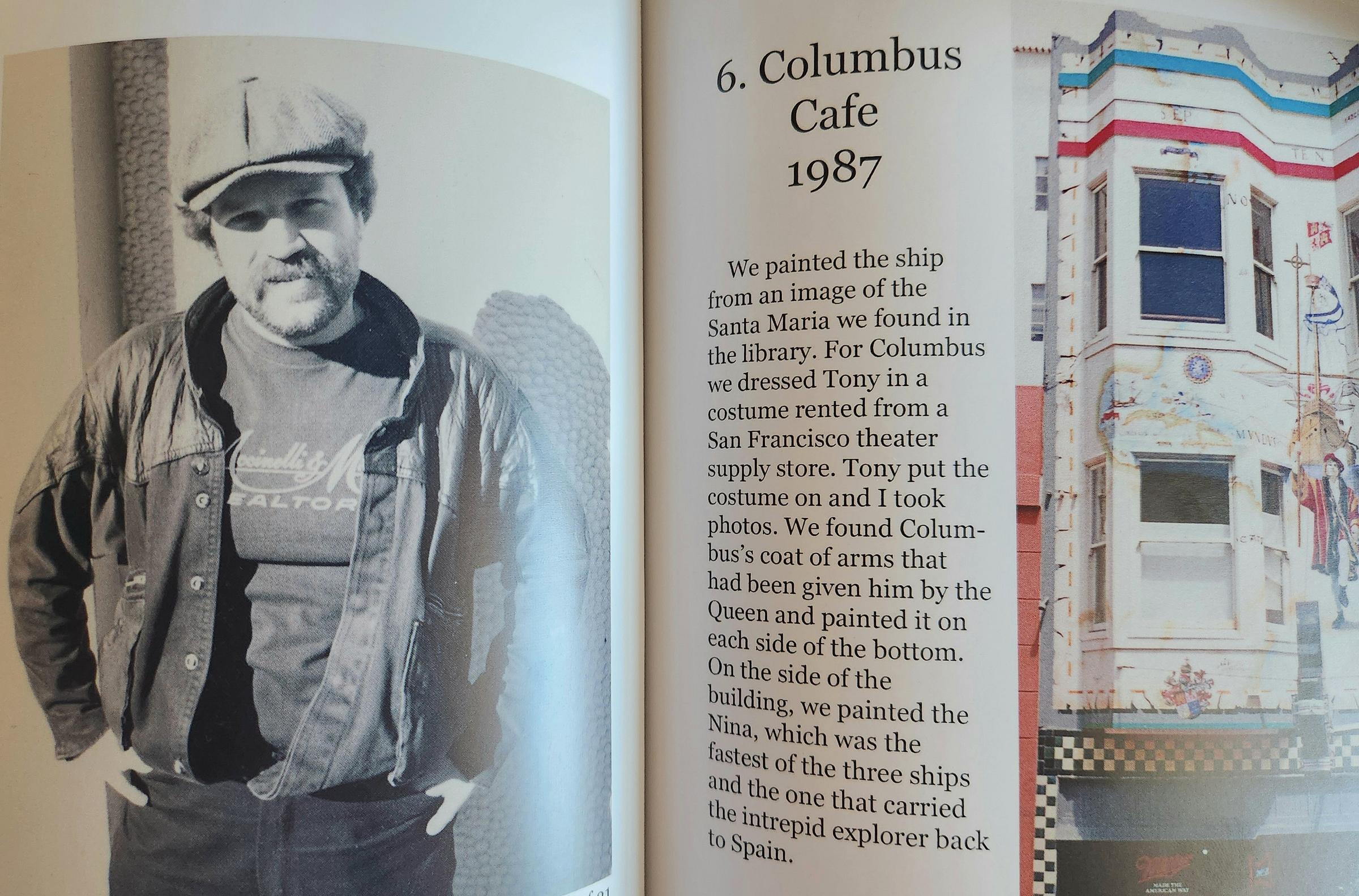
Weber the man is friendly and an easy talker. He shared the story of his breakout murals with little prompting, then pulled out a slim book and flipped it open to a black and white photo of a young man, shot in 1968. This was Giovanni Toracca, a local youth who had made a small fortune on his cherry bomb firecracker sales, and he had walls to paint. The two began a fruitful collaboration, with Weber designing and painting three highly visible locations around San Francisco for Toracca.
Naturally, I had to snag this glossy copy of Weber’s personal history to flip through leisurely. The book is self made and published and dedicated to Leonardo da Vinci, whose notebooks Weber told me he bought and studied in lieu of traditional art school, pointing to a weathered spine on the shelf behind him. The 62 pages are full of family photos and street scenes of his murals paired with brief anecdotes and background information on the artworks or settings, and the first few pages are a smattering of vignettes from his life story — from birth in Japan and life as an Army Brat to delinquent Catholic school and greasers who love to draw to his adoption of his nickname, or “nom du paint.” El Gallo, or The Rooster, was both a name and persona, with red dyed, plumed hair to match his logo, each with a joint in hand and a disaffected cool.
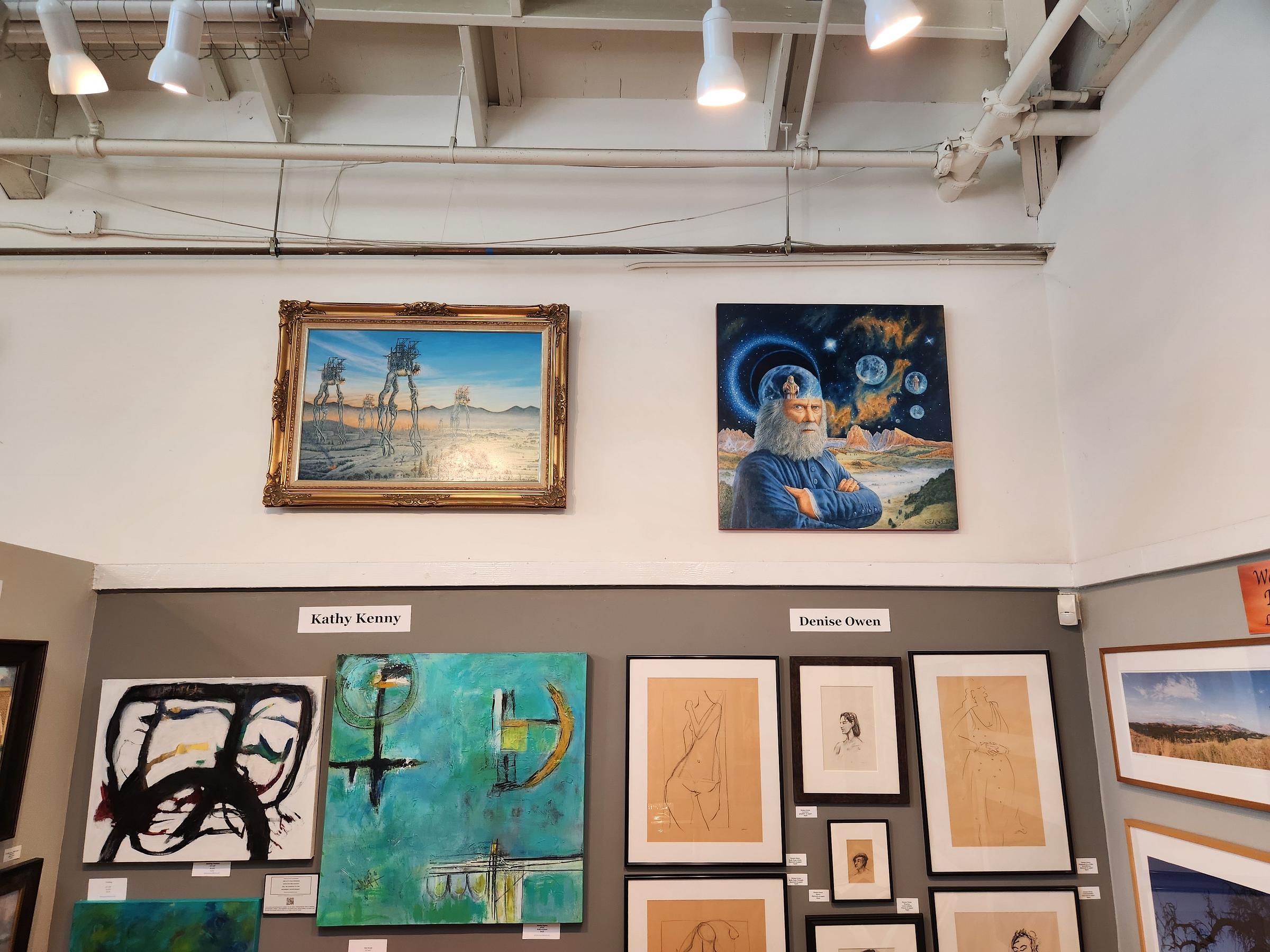
The range in scale of Weber’s works, from tiny, twisted portraits to stories-high murals, is mirrored back on the walls, tables, and studios of the gallery. Though his phone number is listed on the (sole) landing page of the gallery’s website, I was still surprised to find him tending till. Visit the gallery to check out the rotating shows, with a monthly featured artist and opening first Fridays and Saturdays, weekly from Tuesday to Sunday from 11 – 5.
Bill Sala is the featured artist in August, with an opening party Friday August 2. You can get a copy of El Gallo’s book in person (shop small!) at The Grand Gallery or if you’re not local, here.)
